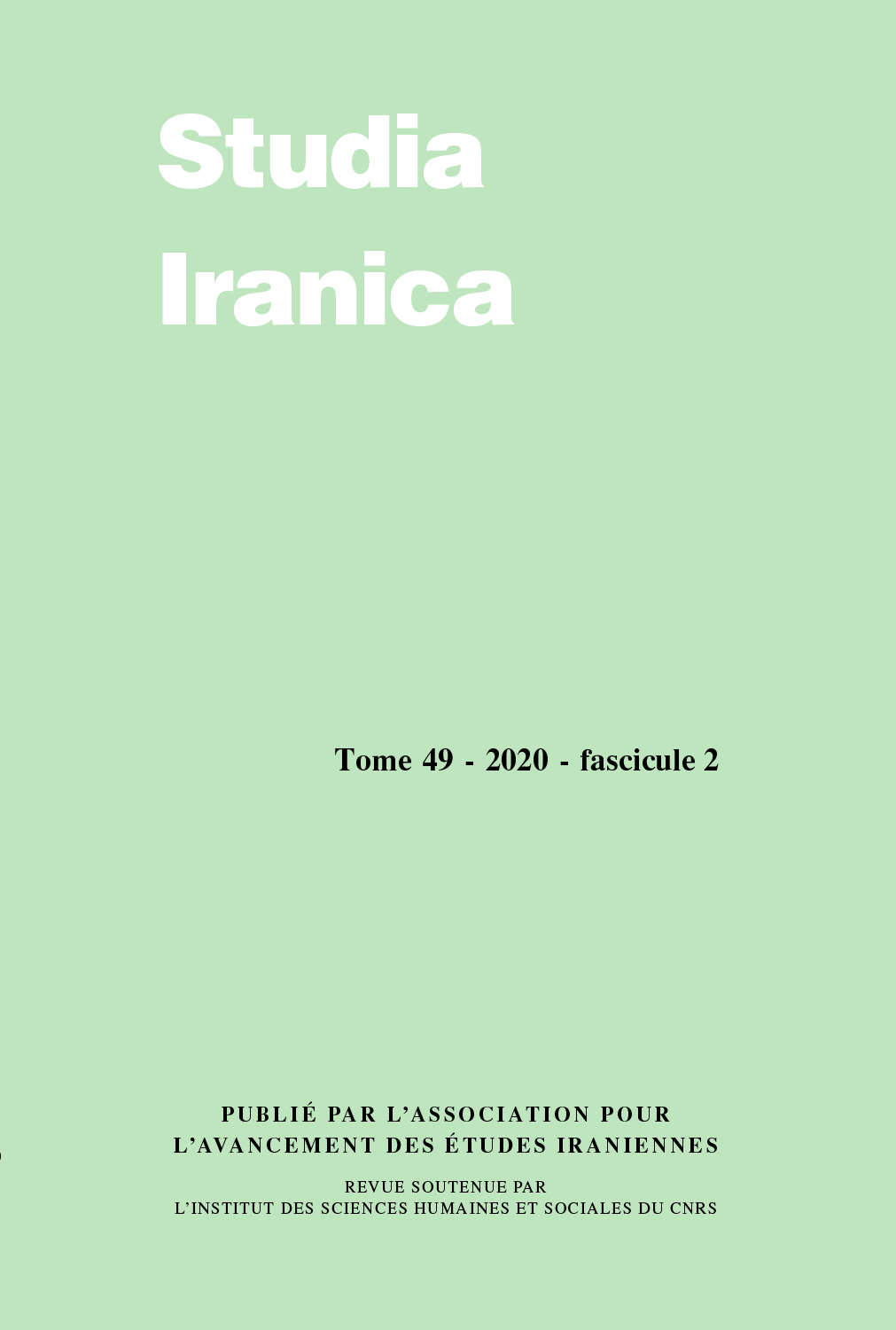 previous article in this issue previous article in this issue | next article in this issue  |

Preview first page |
Document Details : Title: Khayyām Literacy among Turkman Copyists Subtitle: Yāraḥmad Rašidi's Ṭarabkhānẹ Author(s): DONNINI, Piero Journal: Studia Iranica Volume: 52 Issue: 1 Date: 2023 Pages: 79-101 DOI: 10.2143/SI.52.1.3294138 Abstract : The study of the Ṭarabkhānẹ, compiled in 867/1462-63 by Yāraḥmad b. Ḥoseyn al-Rašidi al-Tabrizi, is fundamental to our understanding of how Khayyām came to play a major role in the Persian literary canon. The Ṭarabkhānẹ and other similarly expanded collections of Khayyām’s robā'iyāt, were produced between the fifteenth and sixteenth centuries in the territories subject to the Turkic Oghuz tribal confederations of the Aq Qoyonlu and Qara Qoyonlu. The Ṭarabkhānẹ stands out as one of the earliest systematic recensions of Khayyām’s robā'iyāt. By gathering available sources and meticulously organizing and framing both the robā'iyāt and anecdotes related to Khayyām’s literary persona in the Ṭarabkhānẹ, Yāraḥmad Rašidi crafted two original and authoritative philological works: a coherent profile of Khayyām as an author, and a master copy of his literary output. Yāraḥmad Rašidi’s endeavour to collect and order Khayyām’s compositions ran parallel to the Timurid enterprise of literary canon-building, albeit without directly engaging with it. By reframing the criterion of authentic vs. spurious, according to which the study of Khayyām’s robā'iyāt has long been approached, I argue that the careful study of pseudepigrapha allows us to disentangle the history of Khayyāmian philological inquiry from a strictly reconstructive approach. L’étude du Ṭarabkhānẹ, rédigé en 867/1462-63 par Yāraḥmad b. Ḥoseyn al-Rašidi al-Tabrizi, est fondamentale pour comprendre comment Khayyām en est venu à jouer un rôle majeur dans le canon littéraire persan. Le Ṭarabkhānẹ et d’autres recueils de robā'iyāt de Khayyām ont été produits entre le XVe et le XVIe siècle dans les territoires gouvernés par les confédérations tribales turques Oghuz de l’Aq Qoyonlu et du Qara Qoyonlu. Le Ṭarabkhānẹ est l’une des premières recensions systématiques du robā'iyāt de Khayyām. En rassemblant les sources disponibles et en organisant et encadrant méticuleusement les robā'iyāt et les anecdotes liées à la personnalité littéraire de Khayyām dans le Ṭarabkhānẹ, Yāraḥmad Rašidi a élaboré deux oeuvres philologiques originales et faisant autorité: un profil cohérent de Khayyām en tant qu’auteur, et une version de référence de sa production littéraire. Les efforts de Yāraḥmad Rašidi pour rassembler et ordonner les compositions de Khayyām ont été entrepris parallèlement au projet timuride de construction de canons littéraires, sans toutefois s’y engager directement. En réfutant le critère de l’authentique par rapport à l’inauthentique, selon lequel l’étude des robā'iyāt de Khayyām a longtemps été abordée, je soutiens que l’analyse minutieuse des pseudépigraphes nous permet de démêler l’histoire de l’enquête philologique khayyāmienne d’une approche strictement reconstructive. |
|


